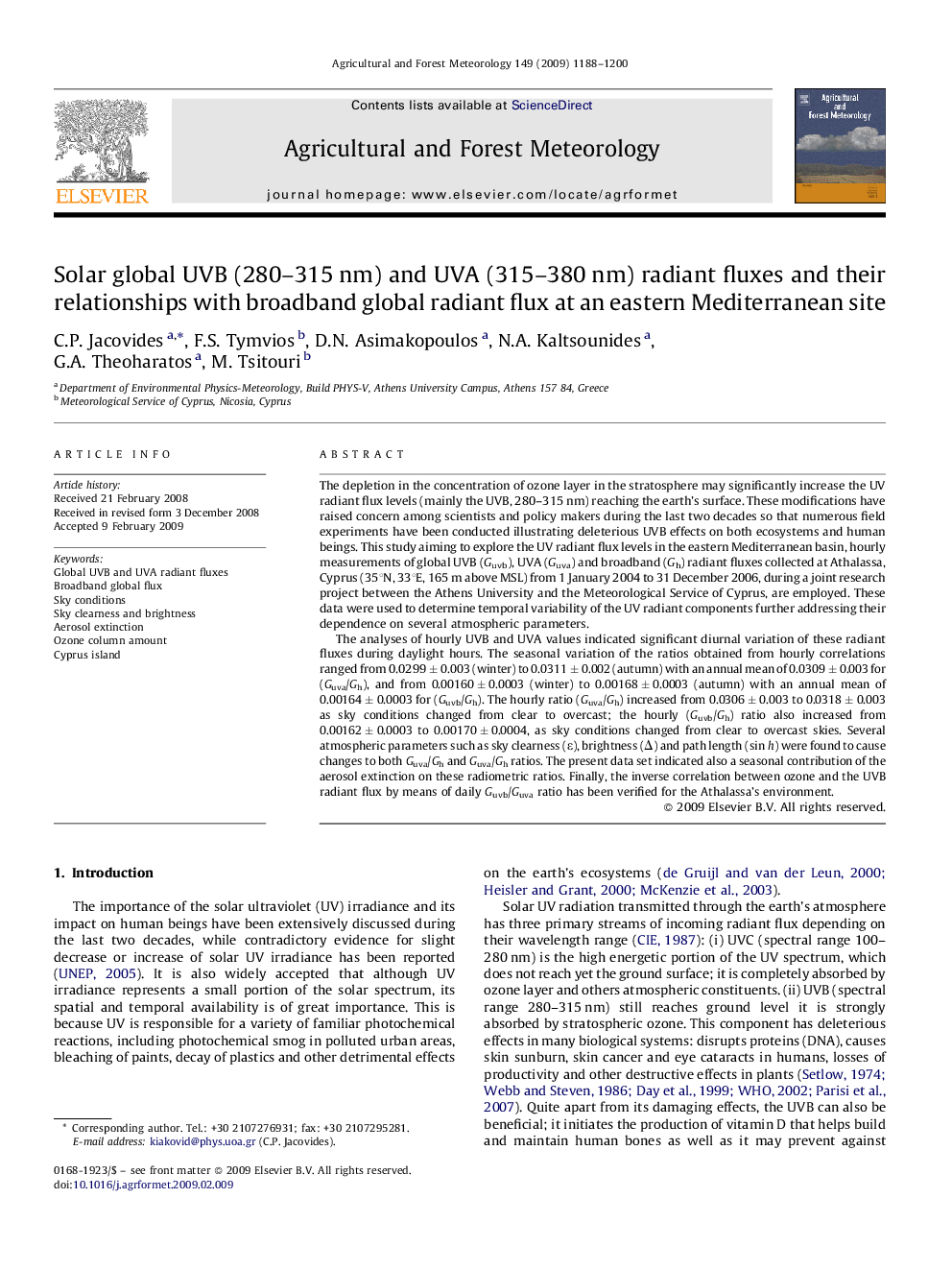| کد مقاله | کد نشریه | سال انتشار | مقاله انگلیسی | نسخه تمام متن |
|---|---|---|---|---|
| 82452 | 158396 | 2009 | 13 صفحه PDF | دانلود رایگان |

The depletion in the concentration of ozone layer in the stratosphere may significantly increase the UV radiant flux levels (mainly the UVB, 280–315 nm) reaching the earth's surface. These modifications have raised concern among scientists and policy makers during the last two decades so that numerous field experiments have been conducted illustrating deleterious UVB effects on both ecosystems and human beings. This study aiming to explore the UV radiant flux levels in the eastern Mediterranean basin, hourly measurements of global UVB (Guvb), UVA (Guva) and broadband (Gh) radiant fluxes collected at Athalassa, Cyprus (35°N, 33°E, 165 m above MSL) from 1 January 2004 to 31 December 2006, during a joint research project between the Athens University and the Meteorological Service of Cyprus, are employed. These data were used to determine temporal variability of the UV radiant components further addressing their dependence on several atmospheric parameters.The analyses of hourly UVB and UVA values indicated significant diurnal variation of these radiant fluxes during daylight hours. The seasonal variation of the ratios obtained from hourly correlations ranged from 0.0299 ± 0.003 (winter) to 0.0311 ± 0.002 (autumn) with an annual mean of 0.0309 ± 0.003 for (Guva/Gh), and from 0.00160 ± 0.0003 (winter) to 0.00168 ± 0.0003 (autumn) with an annual mean of 0.00164 ± 0.0003 for (Guvb/Gh). The hourly ratio (Guva/Gh) increased from 0.0306 ± 0.003 to 0.0318 ± 0.003 as sky conditions changed from clear to overcast; the hourly (Guvb/Gh) ratio also increased from 0.00162 ± 0.0003 to 0.00170 ± 0.0004, as sky conditions changed from clear to overcast skies. Several atmospheric parameters such as sky clearness (ɛ), brightness (Δ) and path length (sin h) were found to cause changes to both Guva/Gh and Guva/Gh ratios. The present data set indicated also a seasonal contribution of the aerosol extinction on these radiometric ratios. Finally, the inverse correlation between ozone and the UVB radiant flux by means of daily Guvb/Guva ratio has been verified for the Athalassa's environment.
Journal: Agricultural and Forest Meteorology - Volume 149, Issues 6–7, 15 June 2009, Pages 1188–1200